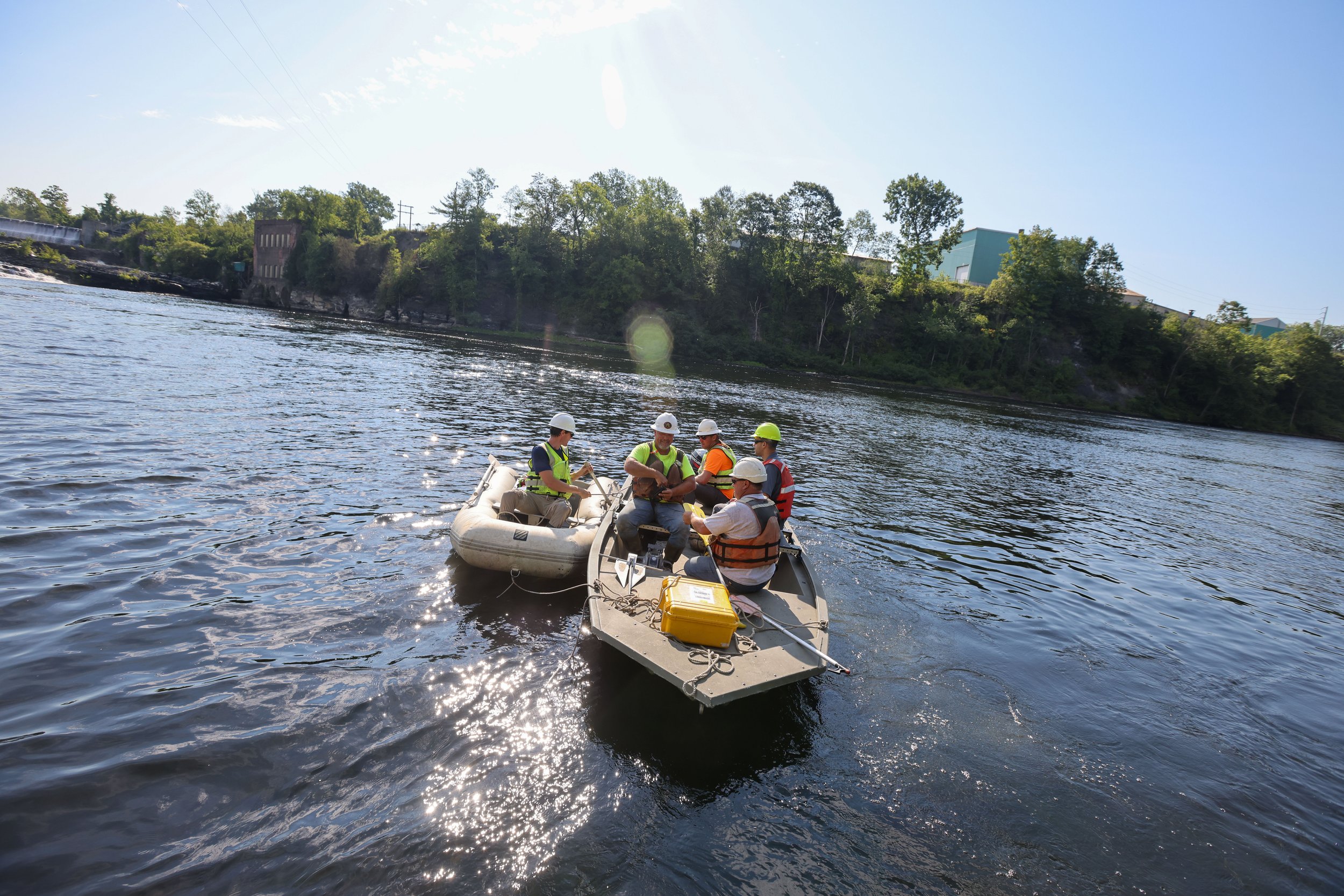
Inside the Successful cleanup of the GE Plant Sites at hudson falls & fort edward
Upper Hudson
GE has undertaken major environmental cleanup projects at its plant sites in Hudson Falls and Fort Edward, N.Y., where PCBs once were used in the manufacture of electrical equipment. The New York State Department of Environmental Conservation, which supervises GE’s work, has concluded the plant sites are no longer a significant source of PCBs to the Hudson River.
HUDSON FALLS
GE completed dismantling the building at its former manufacturing facility in Hudson Falls in 2016 and removed soil below the buildings in 2018. More than 18,000 cubic yards of soil and 3,600 cubic yards of building demolition debris were removed and transported off-site for treatment and/or disposal. An engineered soil cover, with grass, has been installed, and GE relocated the on-site water treatment plant from the original plant site to a 13,000-square-foot building on GE-owned land across the road.
A system of underground tunnels has been installed to capture the small amount of PCBs migrating in bedrock to the Hudson. A vertical shaft, 24 feet in diameter, extends down 200 feet from ground level and connects to a horizontal tunnel in the shape of a Y beneath the river bottom.
Twenty collection drains were installed to intercept and drain water from fractures in the bedrock above the tunnels and beneath the Hudson. These drains allow groundwater to flow into the tunnels, where it is collected and pumped to the on-site water treatment plant. The final phase of cleanup involves addressing PCB-containing soils on the property.
Since 2021, GE has also been working closely with National Grid as the utility deconstructs and removes two vacant and deteriorating structures it owns on the River just below the site of GE’s former Hudson Falls plant. GE and National Grid have a shared goal of completing these projects while protecting the Hudson from the release of contaminants.
FORT EDWARD
In Fort Edward, manufacturing operations ended in January 2016. Deconstruction of the buildings on the plant site began in 2019 and was completed in 2021. A network of underground wells on and near GE’s former manufacturing facility has collected approximately 500 million gallons of water and shrunk a plume of contaminated groundwater by 50 percent. Contaminated soils and sediments have been removed, and a PCB recovery system to collect kerosene and PCBs in groundwater has been installed. Remedial work at the plant site is conducted with oversight from the New York State Department of Environmental Conservation.
GE expanded this recovery system with the installation of four vertical wells and two, state-of-the-science horizontal wells beneath the plant’s parking lot. The system ensures that groundwater containing PCBs and other contaminants is collected before it migrates from the site.
The onsite water treatment plant and recovery systems will continue to operate as part of the long-term environmental cleanup of the site. A long-term monitoring program is conducted by GE to evaluate the continued effectiveness of the work.
To address potential contamination of nearby residential drinking water wells, GE regularly tests the wells and has provided free connections to the public water supply to more than 70 homeowners.
GE also investigated potential impacts to soil vapor — the air underground — south and west of the plant site. Although not required to do so by New York State, GE offered indoor air sampling to any interested property owner within a broadly defined study area. As a result, indoor and underground air was tested in more than 50 homes and in no instance were the state’s protective indoor air guidance levels exceeded. Despite that, where compounds of concern were detected at any level in soil vapor in the area — including many homes with no vapor detected — GE offered to install depressurization systems to prevent the compounds from entering homes. GE also pays for the electricity to run the systems and inspects and maintains the systems, when needed.
Finally, GE continues to monitor conditions of an area located along the east shore of the Hudson where the plant’s former discharge pipe was located.
A network of PCB collection wells beneath GE’s former Fort Edward plant site plays an important role in the ongoing cleanup of the Upper Hudson River.


